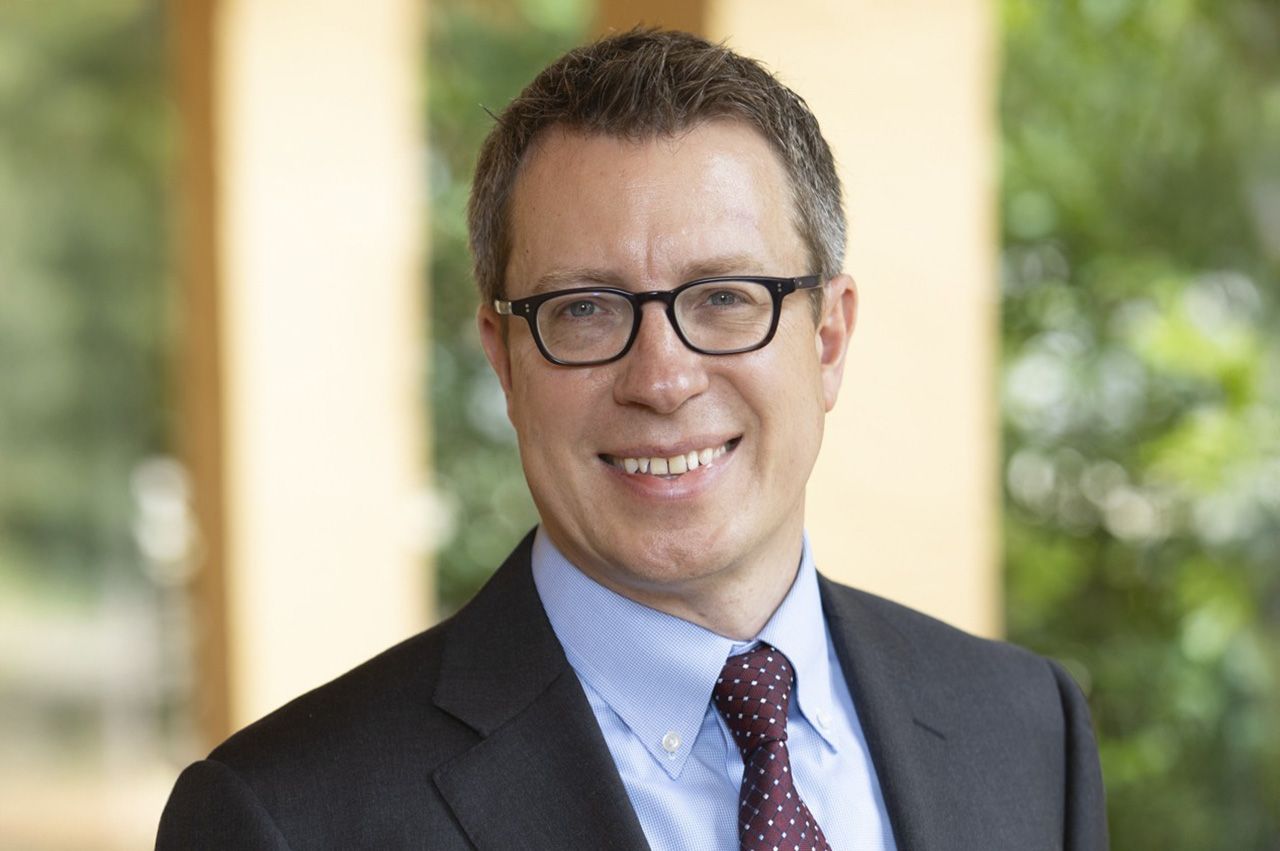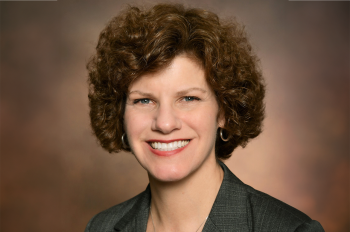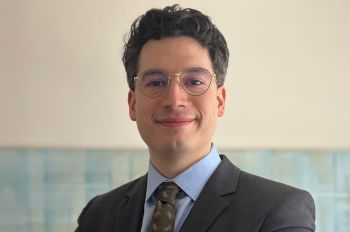Proving Discrimination: Jason R. Bent Tapped to Lead Chicago-Kent’s Malin Institute

“There’s an argument that because of the labor history in Chicago and because of the amount of interesting labor and employment things that are going on here, that geographically this is the most important labor and employment city in the country,” says new Chicago-Kent College of Law Professor Jason R. Bent, who is also the new director of Chicago-Kent’s Martin H. Malin Institute for Law and the Workforce.
He adds, “It’s great to be at a school that has such a reputation and history of dedication to labor and employment law as a field.”
Bent joins Chicago-Kent from Stetson University College of Law in Florida, where he taught for 14 years. While there, he served as associate dean for academic affairs for five years. He also served as a visiting professor at Washington University School of Law in 2023, and was a visiting assistant professor at Penn State Dickinson Law in 2010 and 2011.
However, it was in Chicago where Bent first encountered, and subsequently fell in love with, employment law. After earning his J.D. at the University of Michigan Law School, he clerked for the Honorable Joan B. Gottschall in the United States District Court for the Northern District of Illinois and for the Honorable Cornelia Kennedy in the U.S. Court of Appeals for the Sixth Circuit.
“A decent percentage of the docket during my clerkships was employment discrimination and other employment-related cases,” says Bent. “I wasn’t shocked, but it definitely was a bit of a revelation. I didn’t necessarily walk into that district court clerkship expecting that about a third of my work would be employment discrimination work. But I found that I really enjoyed the cases.”
Bent then spent nine years practicing in Chicago, first as an associate in Foley & Lardner, LLP’s Employment, Commercial Litigation, and Appellate practice, then at his own firm, Smith & Bent, P.C. He mostly focused his practice on employment discrimination work, including systemic discrimination litigation, which now informs his academic research.
Bent is co-author of three course books: Legal Protection for the Individual Employee, An Illustrated Guide to Civil Procedure and Remedies: Cases, Problems, and Strategies (forthcoming). He also co-authors the leading treatise on the use of statistics in employment discrimination cases: The Statistics of Discrimination: Using Statistical Evidence in Discrimination Cases.
“When I was in practice in Chicago, I worked on systemic cases, including disparate impact and ‘pattern-or-practice’ cases. The interplay of statistics and employment discrimination is really fascinating to me,” he says. “I found that my students don’t always love it quite as much as I do, because it involves some math. But over the years I’ve found some ways to make the statistical concepts a bit more approachable for law students. And I explain to them that if you want to do this type of work, then some understanding of the math is necessary.”
Bent says that proving discrimination isn’t always as easily demonstrated in other ways. He gives the example of an employer creating a policy that may seem neutral on its face, such as that all employees must be of a certain minimum height.
“It may turn out that an otherwise facially neutral job requirement or hiring process, such as clearing an artificial intelligence interview screening tool, falls more harshly on one group than another. You can imagine the possibility that the AI tool might weed out more minority applicants, or more female applicants, or perhaps more applicants who were not born in the United States. If that’s the case, then the tool has a disparate impact,” Bent says, adding, “But in order to figure out whether it is actually causing a disparate impact, you have to do some statistical analysis. And if it is having a disparate impact, then the next questions are whether there is a good business justification for use of the tool, and whether the employer can accomplish those legitimate business goals in a way that has less of a disparate impact.”
Using statistics and other types of evidence to prove discrimination is Bent’s favorite part of the job.
It’s a bit like a puzzle.
“Sophisticated employers understand the law, so they don’t tell someone, ‘We’re not hiring you because you’re a minority, or we’re firing you because you’re a woman.’ That kind of express, open discrimination is relatively rare now,” he says.
“Discrimination is a fascinating problem of indirect proof, because ultimately what you’re trying to figure out is what the employer was thinking when it made its decision, but that’s a really hard question to get at.”
Now, Bent brings his knowledge and experience to the Malin Institute, an entity that he has long admired.
“I give a lot of credit to Marty Malin and the history that he has at the school,” Bent says. “He built up a team of people around him, and he was instrumental in building a program here that is the top labor and employment program in the country. Many of his former students are now leaders in the labor and employment law community, and they give credit to Professor Malin for launching their careers. To have the chance to be a part of this program is truly an honor, and I’m thrilled to get that opportunity.”
Bent will bring a unique perspective to the Malin Institute after spending 14 years in Florida. Some labor and employment laws are different in every state, and Bent says Illinois and Florida tend to be at opposite ends of the spectrum where state law applies. These state-by-state differences can have profound implications for both workers and businesses.
“Illinois is on the cutting edge of some labor and employment protections,” he says. “For example, in Illinois we have the leading example of a biometrics protections statute that protects employees from having their biometric information—such as their fingerprints, their retinal scans—collected and used by employers without consent, and without understanding how that information is going to be used.”
Regardless of what path a law student chooses to take after earning their degree, Bent wants to help them understand how to navigate the patchwork of employment laws applicable to their clients. Most of all, he’s hoping that he will have the opportunity to help launch the careers of some of tomorrow’s labor and employment law leaders.
Photo: provided



